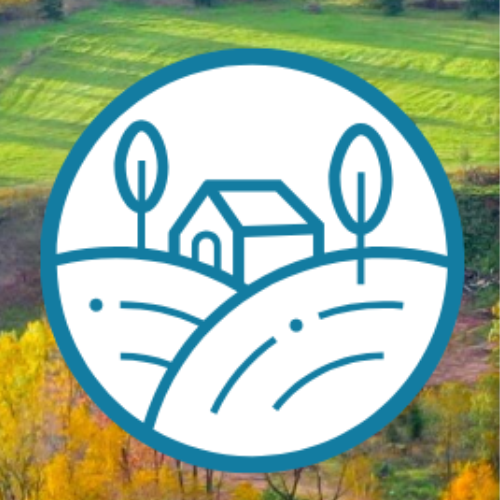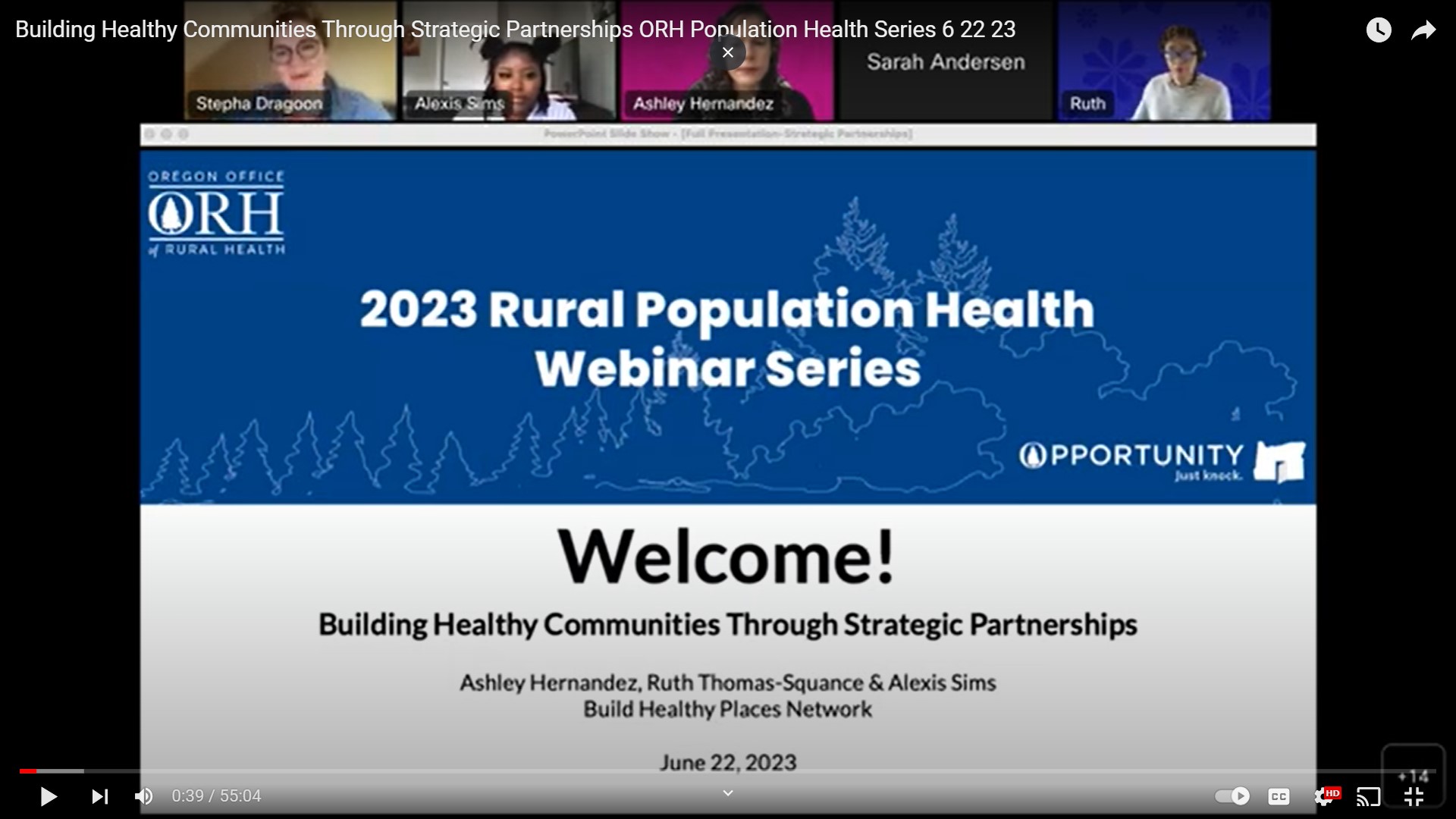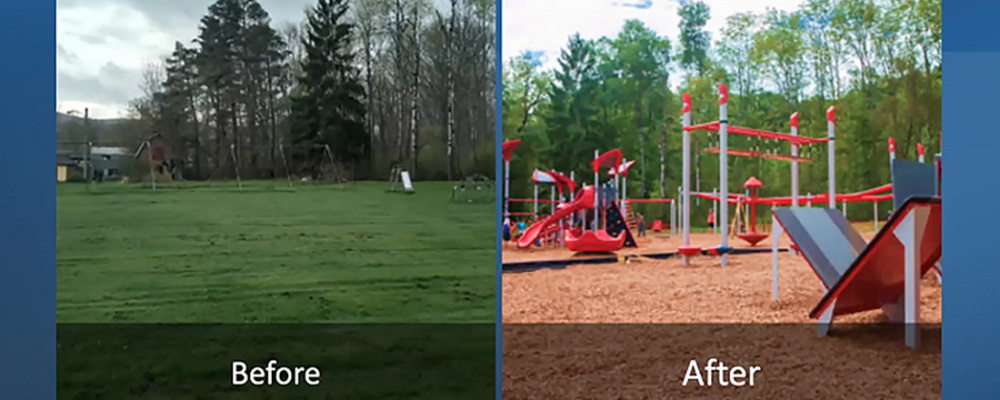
A Playbook for New Rural Healthcare Partnership Models of Investment
- Ruth Thomas-Squance, PhD, MPH
- Colleen Flynn, MA
- Doug Jutte, Ashley Hernandez, Jen Lewis-Walden, Ashauntee Jones, Shante Harding
-
Focus Areas
Health Care & Population Health -
Issues
Community Development, Rural Health -
Programs
Build Healthy Places Network

Many rural communities across the country face challenges in meeting community needs around health, workforce development, financial stability, infrastructure and more. However, there are calls to change the narrative around areas existing outside of urban centers, to recognize the unique assets embedded in these enduring rural communities.
The healthcare industry is a vital player in rural communities, shaping a vision for growth. Often, healthcare organizations are one of the biggest employers in rural areas, impacting communities through their anchor roles and serving an influential role as local conveners able to align groups to address crucial data and build partnerships across sectors.
A Playbook for New Rural Healthcare Partnership Models of Investments, released in 2022 by PHI’s Build Healthy Places Network, is an action-oriented guide designed for healthcare organizations who want to pursue partnerships with rural communities, economic development and other sectors, to create the community conditions that support improved health. It includes case studies from across the country and four core strategies used by healthcare entities as examples for future multi-sector rural partnerships to follow.
See the Playbook
Explore More: Updated Rural Resources from Build Healthy Places Network
In 2024, PHI's Build Healthy Places Network released an update to their Playbook for New Rural Healthcare Partnership Models of Investment, to share updates and additional lessons-learned from organizations featured in the original playbook, helping to provide a richer understanding of the partnership landscape. This follow-up initiative is not just about collecting stories; it's about generating knowledge that can be shared and applied across the rural landscape. By amplifying the voices of those on the front lines, we can foster a community of practice that learns from each other's successes and challenges.
Central Strategies for Collaboration & Partnerships
The Playbook identifies four broad strategies that the healthcare sector can use to collaborate with cross-sector partners for rural health and prosperity:
- Strengthening Economic Opportunity and Workforce Support: Economic stability and community health are interdependent: one cannot be sustained without the other. As anchor institutions and major employers, rural healthcare organizations are often significant economic drivers in the communities that surround them. Additionally, lack of economic stability is a major factor in poor health outcomes, so the fate and stability of rural healthcare institutions, both as service providers and as employers and economic drivers, can impact community health. As employers, competitive recruitment and retention of healthcare staff is a challenge for many rural hospitals. In a competitive market, sufficient housing and childcare opportunities can be critical strategies in recruiting great candidates. This strategy deploys economic and workforce development strategies to create stability and increase health outcomes. It includes strengthening local career pathways, healthcare workforce housing for recruitment and retention and access to childcare.
- Supporting Local Control: Increasingly, rural healthcare is deploying strategies to support community ownership models that help close the racial wealth and health gap. These models are geared toward supporting collective ownership of land through a land trust, promoting food sovereignty or the right to healthy, culturally appropriate food defined by a community’s own agricultural systems, or advocating for policy change to advance community investment or needed land use changes.
- Strengthening Infrastructure to Support Healthcare Access: This strategy seeks to build and strengthen the infrastructure that supports healthcare delivery and responds to the challenges of physically connecting rural healthcare with those needing services. The work can take several forms, such as collaborating with partners to co-locate services to improve access, supporting community hubs for health, expanding reach through broadband availability, or improving transportation for individuals to access needed services.
- Increasing Resources: A common strategy for healthcare investment in rural development is increasing access to resources. Successful approaches can include diversifying the funding base and finding innovative resources, such as a hospital’s use of general obligation bonds and loans to fund a New Market Tax Credit allocation. Another trend is to donate land to support community-based projects such as affordable or supportive housing. An increasing number of healthcare institutions are reaching out to partners in rural community development that have expertise in creatively deploying capital in support of housing, workforce development, and other issues central to rural healthcare’s impact on community health.

Case Study: Wagner Community Memorial Hospital Avera & Yankton Sioux Tribe (South Dakota)
Wagner is a community of about 1,500 people located in Charles Mix County in south central South Dakota. It is adjacent to the Yankton Sioux Reservation and is 120 miles from the closest major tertiary hospital, in Sioux Falls, South Dakota. Almost a quarter of the population in Charles Mix County is living in poverty, double the rate for South Dakota.
Wagner Community Memorial Hospital Avera (WCMH-A) serves the community through a mix of public pay services, Medicare, Medicaid, and the Indian Health Service, providing over half of its services to Native Americans and members of the Yankton Sioux Tribe. This mix of diverse cultures, where healthcare practices and local politics play an intricate role, affects how healthcare is managed and delivered.
One part of this effort was the revival of the dormant Wagner Area Growth, a nonprofit economic development corporation. WCMH-A helped Wagner Area Growth hire an economic development director and recruited a major store chain in the community to adopt a sales tax rebate through the City of Wagner. As a result of the improved product quality and selection, WCMH-A’s revival of this economic development corporation ultimately led to the doubling of retail sales, increased jobs, and better economic stability.
Updated 7/18/2024:
Wagner Community Memorial Hospital (WCMH) continues to serve the greater Wagner area in South Dakota with close to one hundred staff through innovative partnerships as an anchor institution in the community. The 1,500 residents of Wagner are part of a larger 3,500 person service area for the hospital. In following up on the major retailer that was brought in to the community that was mentioned in the original playbook, the sales tax rebates ended and that retailer closed due to its parent company declaring bankruptcy. However, the project demonstrated the feasibility and another larger national retailer has been doing quite well serving the community in that space.
Since the playbook WCMH has been in dialogue with partner Wagner Area Growth, a non profit community economic development agency, to address two pressing community issues that often have great impact on rural healthcare institutions: childcare and housing.
An innovative solution is emerging with WCMH leading the creation of a $250,000 loan fund to address these two challenges. The loan fund will provide a 0% interest loan with a 10 year amortization and 5 year term with payments not due until the borrower has sufficient 30 day funds. WCMH is leading with a $125,000 investment and planning on serving as the managing partner for this loan fund with the remaining 50% coming from community businesses and investors.
WCMH already has three additional investors for $120,000. A local nonprofit daycare that will use the funds to purchase and renovate a larger space. Aside from addressing an identified community need by increasing capacity of serving 30 to 60 children, this investment will also have an economic impact as they will grow their staff from 5 to 12 full time employees while potentially increasing or retaining the workforce by 30 . Because of a new management agreement with Rural Office of Community Services (ROCS), a private nonprofit agency serving the residents of South-Central & South-Eastern South Dakota, the daycare staff will receive significant wage increase to a new minimum of at least $15 per hour, and access to healthcare benefits.
WCMH hospital staff have an average age of 35, and with it the demand for childcare continues to grow, recruitment and retention are key challenges for rural healthcare and WCMH with loss of just one RN estimated to cost around $75,000 to replace.
In addition to childcare needs, Wagner Area Growth is interested in creating attainable housing for the community and is in discussions for potential housing investments alongside with the local school district who have funding for housing teachers.
Building Healthy Communities Through Strategic Partnerships ORH Population Health Series
In June 2023, BHPN staff presented on the “Building Healthy Communities Through Strategic Partnerships” webinar with the Oregon Office of Rural Health. The session focused on why place matters and the impact it has on the health and well-being of communities. Take a deeper dive into the case studies that were shared from the Rural Playbook for Healthcare Investment and learn how to implement the playbook’s tool, the 5-step Pathway to Successful Cross-sector Partnerships.
Work With Us
You change the world. We do the rest. Explore fiscal sponsorship at PHI.
Support Us
Together, we can accelerate our response to public health’s most critical issues.
Find Employment
Begin your career at the Public Health Institute.



